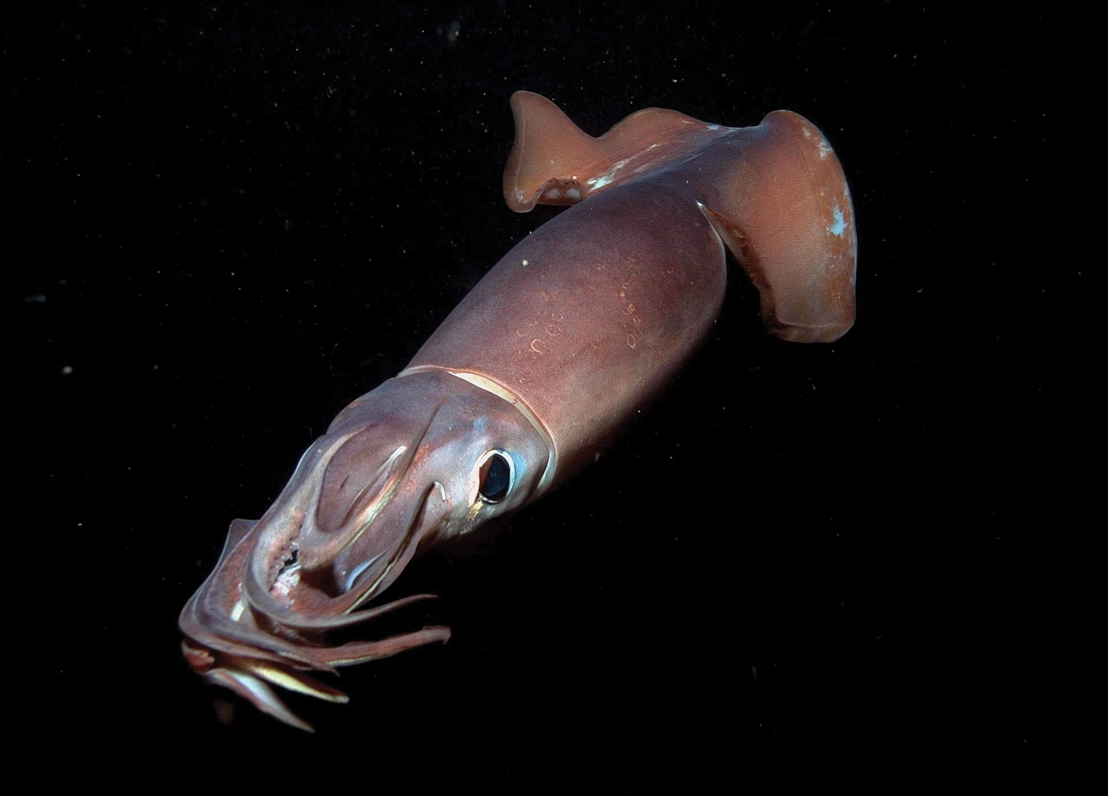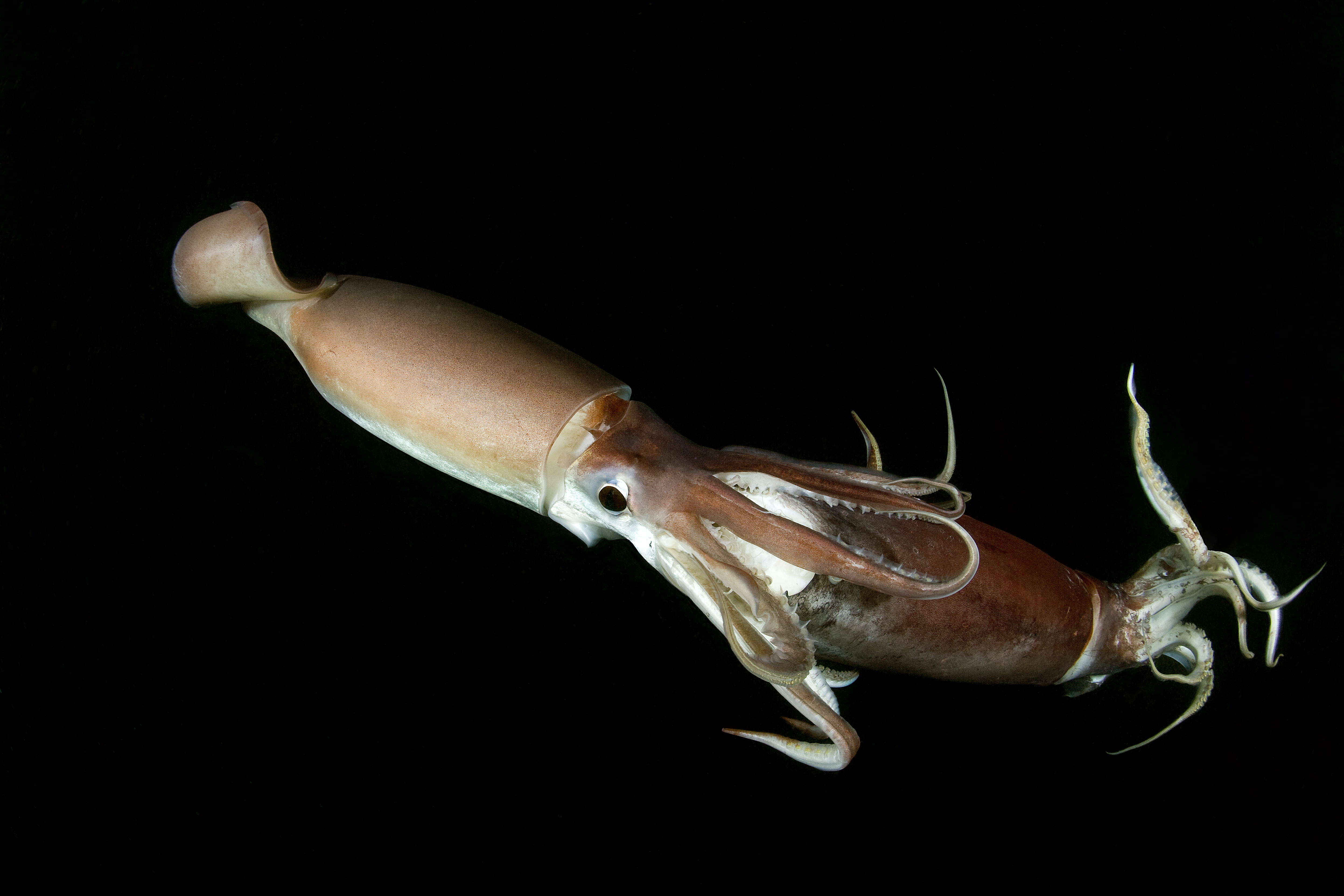Humboldt squid, also known as the jumbo squid, is a large, aggressive sea animal. It grows to more than 6 feet (2 meters) in length and may weigh up to 110 pounds (50 kilograms). When the animal is angered, it flashes a deep red color that comes from light-emitting structures in its skin called photophores. The Humboldt squid lives in the waters of the Pacific Ocean from northern Mexico to the islands of Tierra del Fuego, at the southern tip of South America. The squid is named after the Humboldt Current, also known as the Peru Current, a wide band of cool water that flows slowly north along the west coast of South America. The squid has hooked tentacles and a sharp, parrotlike beak.

The Humboldt squid spends most of its time at depths from 650 to 2,300 feet (200 to 700 meters). It comes up to the ocean surface at night to hunt for prey. The squid sometimes hunts in groups of more than 1,000 individuals. It usually feeds on fish and shrimplike animals called krill. The squid also hunts larger prey, including sharks, marine mammals, and other Humboldt squid. It has also been known to attack divers when threatened. Its predators include sharks, swordfish, and tuna.

The Humboldt squid reproduces in the warm waters off the coast of northern Mexico in the winter. The female lays a million eggs or more, very few of which survive to adulthood. The squid sometimes migrates as far north as the Gulf of Alaska in the United States.
